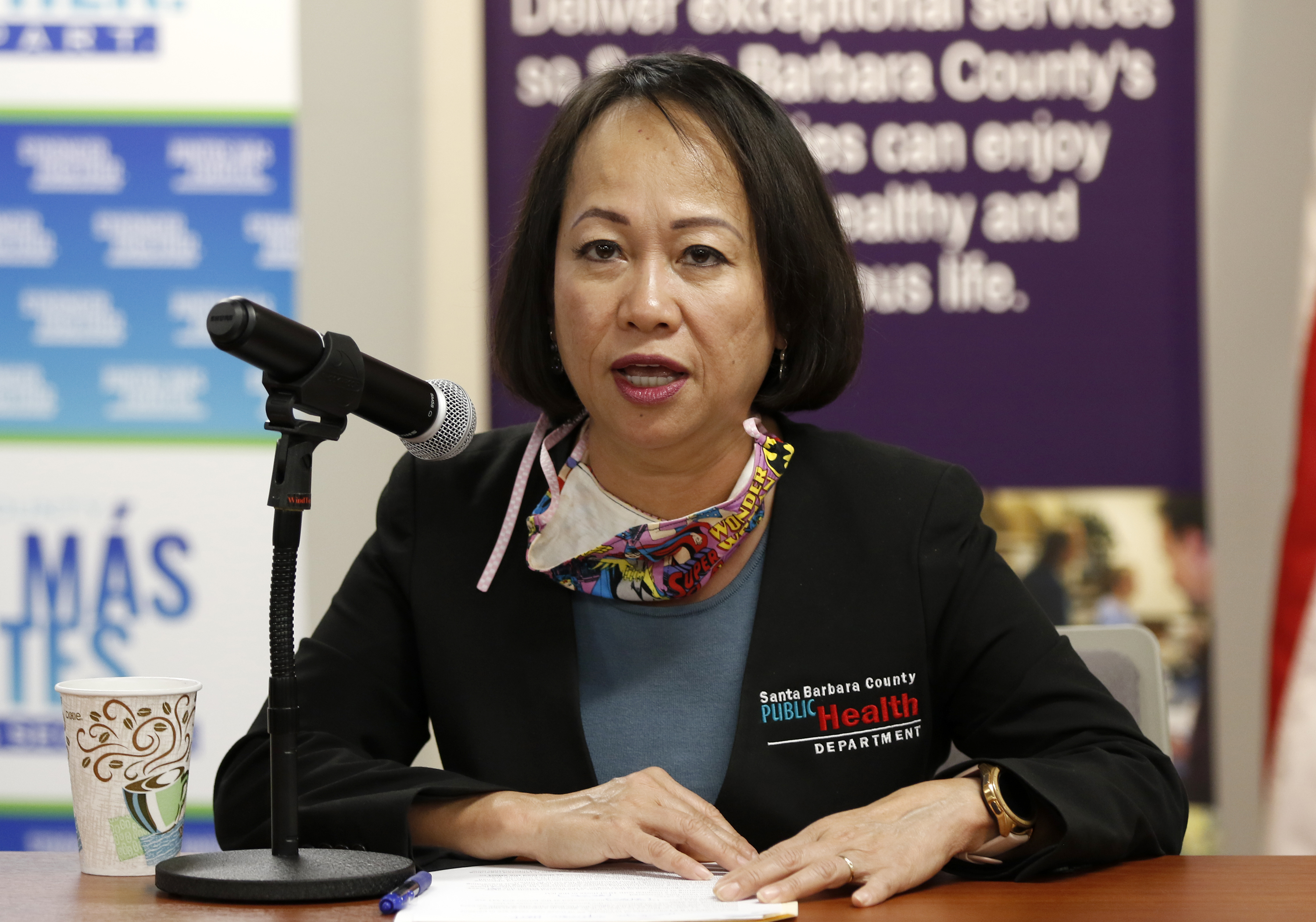Santa Barbara County Takes on Health Equity Gap and Halloween
Latinx and Indigenous Migrant COVID-19 Task Force Could Help County Move Faster Toward Reopening Businesses

Though maintaining its spot in the red tier, Santa Barbara County is experiencing a slight uptick in case rates and is also grappling with the best ways to reduce the disparity of virus transmission between Latinx and Indigenous residents and the rest of the county — an undertaking the Public Health Department has worked at throughout the pandemic.
“COVID shows us that we’re all in this together, that we can’t get out of whatever tier we’re in until we raise the people in the lowest quartile,” 3rd District Supervisor Joan Hartmann said at Tuesday’s hearing.
The quartile Hartmann mentioned is in reference to the California Healthy Places Index (HPI), a metric which the county has to meet at the same time as the color-coded tier metrics. The metric aims to reduce disparity in the transmission levels of COVID-19 among county residents and shows which areas in the county are the least safe from COVID-19.
Get the top stories in your inbox by signing up for our daily newsletter, Indy Today.
“We asked, how do we prevent the increase in cases, the hospitalizations, and how do we prevent the deaths in Latinx community members?” Public Health Director Van Do-Reynoso said. “And that was the genesis of the Latinx and Indigenous Migrant COVID-19 Task Force.”
She introduced Melissa Smith, the director of health equity initiatives at UC Santa Barbara, who described the massive undertaking. She said that many Latinx and Indigenous immigrants in the county face systemic reasons outside of their control for catching the virus, such as crowded housing, so her role throughout the pandemic has been finding ways to combat those.
She said the Latinx and Indigenous Migrant COVID-19 Task Force has formed 93 cross-sectoral partnerships with other organizations and nonprofits, has outreach in Spanish and multiple Indigenous languages, and has reached 21 small farms with resources such as face coverings, hand sanitizers, and information. It also has bimonthly workgroup meetings for farmworkers and their families, mental health and wellness, and one for Lompoc prison inmates and their families.
Public Health’s success with closing the health equity gap can actually help the county move ahead faster toward reopening businesses, too. In order for the county to move to the next orange tier, it would have to have an adjusted case rate of 1 to 3.9 per 100,000, an overall test positivity rate between 2 and 4.9 percent, and the lowest HPI quartile must have lower than a 5.25 percent positivity rate for three weeks.
But there is one way to speed things up.
If the county maintains lower than a 2 percent positivity rate overall and in the lowest HPI quartile for two weeks or longer, it can progress to the orange tier and open more businesses if the case rate is declining — even if the case rate metric is still above the required rate for orange.
Do-Reynoso said she will go into detail about the county’s lowest quartile and its specific demographics on Tuesday, October 13.
Keep Halloween COVID-Free
While the topic of Halloween did not come up at Tuesday’s hearing, it was a main focus of Friday’s Public Health update. “Halloween must look different this year,” said Supervisor Gregg Hart on Friday. To keep Halloween from becoming a super-spreader event, Public Health is enlisting public support for creative alternatives.
Costume contests using virtual technology, watching a Halloween movie with online chat or video with friends, or holding a candy scavenger hunt to replace trick-or-treating are among the list of ways to make a festive Halloween, but keep it safely within your own household, at the Public Health website publichealthsbc.org.
The county will do its part by hosting a costume parade, and Hart invited parents and children to send a high-resolution photo of themselves or their pets dressed in costume to news@countyofsb.org. The images will be assembled into a livestream to be televised on Saturday, October 31.
If families do decide to go trick-or-treating, Do-Reynoso said on Friday, she encouraged them to stay in neighborhoods they were familiar with and avoid crowds in which they couldn’t control physical distancing. An alternative is to use vehicles to hold a “trunk or treat” or to visit Halloween displays — and to be sure to keep a good physical distance away from each other.
She suggested that those who plan to give away candy at the door should also plan on maintaining social distancing from trick-or-treaters — perhaps by setting up a table lengthwise at the door or moving the treats to the end of the driveway or walkway. Greeters should also use tongs to hand out the candy and wash their hands frequently.
They also stressed the importance of wearing a face covering, encouraging the public to make them part of the costume or to let children decorate their own.
Correction: Dr. Melissa Smith is with UCSB, not the County of Santa Barbara.
At the Santa Barbara Independent, our staff is working around the clock to cover every aspect of this crisis — sorting truth from rumor. Our reporters and editors are asking the tough questions of our public health officials and spreading the word about how we can all help one another. The community needs us — now more than ever — and we need you in order to keep doing the important work we do. Support the Independent by making a direct contribution or with a subscription to Indy+.


